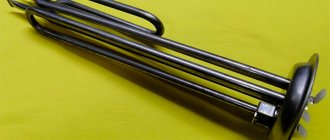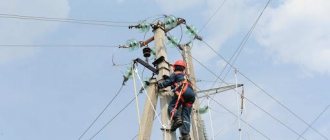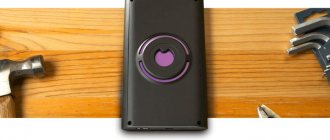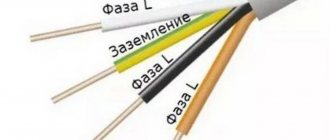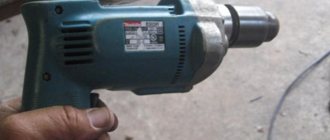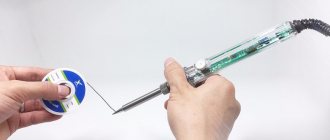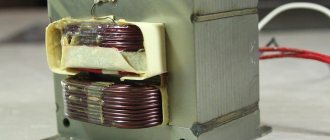A hidden wiring finder is an indispensable device if you need to detect wires in a wall or floor. In addition to electrical repair work, the device can also be useful for other work when you need to find wiring without damaging it or getting an electric shock.
There are quite a lot of devices for this purpose; they differ not only in manufacturers and models, but also in methods of detecting wires. One of the interesting options is a device called “Woodpecker” made in Ukraine. You can assemble it yourself if you wish.
Features and Specifications
First of all, the devices differ in their operating principles. Electrostatic devices are able to find wires if they have voltage. If the line breaks, they become ineffective or do not work.
Electromagnetic types are capable of detecting the electromagnetic field of an object, in particular an electrical cable. For inductive devices, the detection method is identical to that used by a metal detector. The detector itself creates an electromagnetic field, so it is able to detect faulty wiring.
Combined - such devices use several detection methods at once, which makes them the most effective. Such multifunctional devices include the Woodpecker. The signaling device is made in a black plastic case, the weight is about 250 g. An antenna is provided in the upper part of the case.
The Woodpecker alarm is powered by a 9 V battery, which is inserted from the back by unscrewing a screw. There are 4 buttons on the front panel that are responsible for the sensitivity range. One is the weakest sensitivity (radius up to 1 cm), four is the strongest (50 cm or more). During operation, the Woodpecker alarm makes characteristic sounds and flashes the light.
Factory detector circuits
There are several types of factory-made detectors:
- Electrostatic. The advantages of such a device are the simplicity of the internal structure and the ability to find metal objects at a considerable distance. The disadvantage of the detector is that it can only search in a dry environment. Otherwise there will be false positives. In addition, only those wires that are energized can be detected.
- Electromagnetic. Advantages include simple circuit design and highly accurate wiring detection. There is only one drawback, but a significant one: in addition to voltage, you need a fairly powerful load - at least 1 kilowatt.
- Metal detector. This device is a standard metal detector. The main advantage is that there is no need for tension. Disadvantages: detects any metal (not just wiring), and is also structurally complex.
Search for wiring
“Woodpecker” is not only a sensitive indicator of hidden wiring, but also a device capable of performing a number of related tasks. It will help detect metals in the walls that interfere with drilling or repairs.
The Woodpecker alarm will notify you of a find using a sound signal. If the wiring is live, the device will easily detect it, focusing on the pulses supplied by the electric current.
The Woodpecker device searches for hidden wiring without contact. “Woodpecker” will help you detect wires under a thick layer of plaster, drywall and even concrete. The detector is quite accurate, so you don’t have to additionally destroy the plaster to identify where the wiring is located. Often wires run far from the intended path, so a device is necessary when searching for them.
If there is no wiring diagram for the building's power supply, or it is not highly accurate, you can easily locate the wires.
Similar devices are used by professional electricians, who every day have to look for wiring at various facilities, which include residential, office, and warehouse premises.
Even if you just want to hang a shelf on the wall, it doesn’t hurt to check if there are any dangers in the form of wires, because hitting them with a drill or screw will not end well. By ringing the wall with the Woodpecker alarm, you can work in complete confidence that you will not encounter such problems.
The device uses an antenna to strengthen the signal, which allows it to recognize obstacles more clearly. You will be able to detect the wire through which the phase passes. The Woodpecker detector will help detect not only those cables that lack insulation, but also well-insulated wires. In this case, there is no need to make direct contact with them.
A guide on how to choose a hidden wiring detector and how to use it
In fact, a hidden wiring detector is a technical device that, due to its functional features, can detect hidden wiring and damage to the wire inside the wall box. Read the instructions on how to rewind the electric meter on this page.
The hidden wiring detector is shown in the photo
Which is better?
At the moment, among manufacturers, two types of hidden wiring detectors are considered the most effective and sensitive. Their main advantages over other variations of this device:
- Durability;
- Easy to operate;
- Multifunctionality;
- Long-term warranty available.
All of the above qualities are possessed by technical equipment from manufacturers such as Bosch and Lis. In the first case, you can add high German quality to everything mentioned above. However, this trading company has had branches in the Russian Federation for a long time. Instructions for installing the electrical panel here: https://howelektrik.com/provodka/elektroshhitok/instrukciya-po-montazhu-elektroshhitka.htmll.
Today, on the domestic market for special equipment, you can purchase various devices that can help with repairs and determining the location of hidden wiring in a wall structure:
- speed indicator wiring - such a device is the most common and purchased throughout the Russian Federation;
- speed indicator wiring e121 woodpecker - the device is so named due to the specifics of its work;
- metal detector and sc. wiring – this device detects not only the presence of transport wiring lines, but also metal structures inside wall panels;
- sc detector Bosch wiring is of high quality. Mainly produced in Germany;
- Fox m seeker sk. wiring - domestic equipment. Has high reviews among the average consumer;
- sc detector wiring DSL 8220S – has increased sensitivity, before use you should read the instructions;
- contactless indicator sk. wiring - in this case we are talking about a device that does not require direct contact with the electrical wire.
Hidden wiring indicator in the photo
Hidden wiring detector in the picture
The photo shows a Bosch hidden wiring detector
The picture shows the hidden wiring detector DSL 8220S
Non-contact indicator of hidden wiring in the photo
It goes without saying that purchased equipment is much better than hand-assembled equipment. Nevertheless, there are many craftsmen in Russia who can assemble this analytical equipment with their own hands.
Scheme
To better understand how a hidden wiring detector works, it is necessary to refer to its typical diagram; this is the only way the user will be able to use this technical element with maximum efficiency and caution. Read about the design of an alternator.
How to find wiring in the wall?
In order to detect the presence of hidden wiring in a wall cavity, it is necessary to use special equipment that can illuminate the wall structure in a short period of time.
Finding hidden wiring in a photo
If the device is a contact device, then it must be leaned against the protruding wire. Then, after it “passes along the wall,” either a sound will be heard or the LED installed in the handle of the structure will light up. In the event that it is necessary to detect the location of a short circuit. They also use this method. In the damaged area, the device will stop glowing.
Another example of self-search for hidden wiring
However, for those who have never encountered this problem before, it is worth using the video material offered below:
How to make hidden wiring in a wooden house?
An example of hidden wiring in a wooden house in the photo
To carry out the installation of hidden wiring trunk lines in the wall space of a wooden house, you must use a special PUE. This is a kind of set of safety rules that stipulates and clarifies all the points directly related to the installation of hidden electrical wiring. It is very important that every action of the master is recorded on a circuit diagram. In the future, it will help you easily detect system damage.
Another option for hidden wiring in a wooden house
Elements
When installing hidden electrical wiring in a house, the following technical elements are used:
- single-key recessed type switch - installed so that the main part is embedded in the wall, and the surface part is located outside.
- two-key recessed switch - the difference from the first is the number of keys on the element.
- installation box – allows you to significantly save on technical manipulations;
- junction boxes - used to organize hidden electrical wiring;
- a recessed plug socket is a standard version of the socket used in every city apartment;
- hdmi sockets for hidden wiring – this type of device is innovative;
- hidden wiring socket with grounding – prevents the penetration of electric current, removes excess eddy currents. Read about the working principle of a DC generator.
The photo shows an installation box for hidden wiring
Recessed type socket in the photo
Hidden wiring socket with grounding in the photo
Cost of hidden wiring indicator
You can purchase a hidden wiring indicator at any store that sells everything for the home. It should be noted that depending on the functionality of the device, its cost will vary from 39,000 to 115,000 rubles. In any case, if you have no desire to purchase equipment of this type, you can rent it for a while. Depending on the region, the rental cost of this mechanical kit will vary from 2,000 to 5,000 rubles. However, it is best to check the rental price with a specific company.
You can find out more about the photo relay, what it is and its functions here.
Where to buy a device for finding hidden electrical wiring?
Where to buy in Moscow:
- Trading company Pan Electric Moscow region, Khimki, Leningradskaya str., 25 Business Contact phone number;
- Styling LLC Moscow, st. Krasnoarmeyskaya, 12, 1 Contact phone number;
- LLC Measuring Systems Moscow, st. Novaya Basmannaya, 14, building 4, office 106. Multi-channel contact telephone;
Where to buy in St. Petersburg:
- LLC Measuring Systems St. Petersburg city, Ligovsky Prospekt, 50, bldg. 11, office 48 Contact phone: +7 (812) 309-10-73, 309-10-86;
- Eurotek LLC St. Petersburg Sofia st. 14 Contact number Free call within Russia
- Trading company 220 Volt, St. Petersburg, Stachek Ave., 88, Contact phone.
Video
Watch a video about the hidden wiring detector:
When working with electricity, it is very important to remember to be as careful as possible. Electric current does not tolerate errors and mistakes precisely for this reason; if personal experience is not enough to carry out the analysis, you must use the services of an experienced electrician. It’s better to pay once than to suffer from defects and shortcomings.
Nov 17, 2015 Tatyana Sumo
Checking the phase connection
“Woodpecker” E 121 can also be used to check whether the phase in the electric meter is connected correctly. To do this, you do not need to remove the cover from the meter or break the seal: the antenna will pick up electrical impulses from a distance.
Woodpecker alarms are used to detect faults in electrical substations; they are used by professionals in critical areas and by amateurs at home. Any cables can be detected, regardless of how many phases the system has, and direct contact with the wiring is not required, which makes use safe.
“Woodpecker” is suitable for checking wiring in machines, panels, meters, detecting cables in hay, floors, regardless of what finishing material was used. The device perfectly detects live wires, which is important from a safety point of view. In addition, using the device you can also find the place where the wires broke.
“Woodpecker” E-121 is produced in different modifications, which differ in sensitivity to the electric field; the maximum distance that the detector is capable of scanning reaches 700 mm.
Features of application
In order to achieve high results, the device must be used in dry weather with low air humidity. If it is raining outside and damp indoors, the analyzer will begin to make errors, as water distorts its signals. Various aggressive gases, as well as dust, have a negative impact on the operation of the hidden wiring detector e121 Woodpecker.
When searching with a signaling device, the house should not be de-energized. Before you start working, you need to turn on the device and hold it near the walls for some time. This will allow the alarm to configure itself automatically. If you start working right away, perhaps “Woodpecker” will make mistakes. If you are dealing with the device for the first time, practice on open wiring first. To do this, you can use electrical appliances connected to the network, working - you will learn to accurately recognize the signal supplied by the sensor.
Industrial circuits of professional detectors
You can assemble a professional-level device at home. However, such equipment has a rather complex design, and its manufacture will require a lot of effort. Below are two diagrams to choose from: the first refers to an industrial device, the second to a homemade Woodpecker device.
Scheme of an industrial signaling device for hidden wiring
Scheme of a homemade wiring detector “Woodpecker”
You can also make a device like YADITE 8848. Below are two options for such a device.
Schematic diagram of the detector on TC4069UBP
Wiring locator diagram for 74HC14AP
How to build the necessary device yourself
The circuit for creating a device, similar to the Woodpecker alarm, includes a field-effect transistor. Such a detector will be able to record electric fields.
Of course, it will be useless if there is a break in the wiring, but it will be able to detect working cables. You will need the following tools:
soldering iron;- knife, wire cutters, tweezers;
- field effect transistor (KP103 is suitable);
- a speaker with a resistance of no less than 1600 and no more than 2200 ohms;
- The device can be powered by 1.5 - 9 V batteries;
- switch button;
- wires;
- the container in which the device will be located, for example, a plastic box;
- seeker.
The home-made device will operate in a similar way to the “Woodpecker” hidden wiring alarm. The speaker will report the difference in network frequency, and you will be able to hear a hum that differs in tone. The closer the alarm is to the obstacle, the louder the noise will be. It is important that the transistor is soldered correctly. Factory devices have slightly different sounds, since the design is more complex. It is easier to recognize what exactly the “Woodpecker” wants to tell you than when using a homemade device, which still needs to get used to.
An important part of the device is the gate, so when purchasing a transistor, choose one that has a metal body connected to the gate.
Metal will increase the signal and act as an antenna. For convenience, you can connect a small ammeter or indicator with an arrow to the alarm, borrowing it from an old tape recorder. The rating should not exceed 1-10 kOhm.
The simplest circuits of homemade devices
There are several schemes of such devices.
With sound indication
You can make a simple hidden wiring detector with your own hands using resistor R1. This resistor protects the circuit from induced voltage. Moreover, even if you install it, this most likely will not affect the operation of the device.
Hidden wiring detector circuit with sound indication
A copper conductor with a length of 5 to 15 centimeters is used as an antenna. When wiring is detected, a specific crackling sound is produced. The piezo element is connected according to the bridge circuit principle, which allows you to control the volume level.
Sound indication combined with light
This circuit is also simple - you only need one chip.
Hidden wiring finder circuit on a microcircuit
Features of the circuit: the value of resistor R1 must be equal to or greater than 50 MOhm. The LED is used without resistance limitation, since the microcircuit performs this task independently.
On a field-effect transistor (first circuit)
Transistors of this group are extremely responsive to an electric field. This feature is used in the diagram below.
Field-effect transistor wiring finder circuit
From the picture you can understand that the device is very simple; you can make it yourself, without using any special devices. The supply voltage indicator is from 3 to 5 V. The current required is so small that the detector can operate for 5-6 hours without shutting down. The antenna coil is fixed with a 0.3-0.5 mm wire to the core, which, in turn, has a diameter of 3 mm. The number of turns depends on the wire itself: 20 turns for a 0.3 mm wire and 50 turns for a 0.5 mm wire. The antenna can function both with and without a frame.
On a field-effect transistor (second circuit)
Another option for making a hidden wiring detector with your own hands using a field-effect transistor is to use the KP103 microcircuit . This field grass is characterized by high sensitivity. If its gate is in close proximity to the wiring, the resistance is reduced, which leads to the opening of other transistors. After this, the LED begins to glow.
Note! Polevik KP103 can be used with any letter, just like the AL307 light diode. The fact is that bipolar transistors with such conductivity have low power, and the transmission coefficient must be significant. Therefore, instead of KT203, it is recommended to choose KT361.
The device is small in size - assembly can be done even in a marker housing. The antenna extends through the hole in the marker. The antenna length is from 5 to 10 centimeters. However, if the wiring is not too deep in the wall (no deeper than 10 centimeters), you can get by with the length of the field-effect transistor leg.
Hidden wiring detector circuit using transistor KP103
The KP103 transistor is installed horizontally, and the gate must be bent so that it is located directly above the transistor body.
Metal detector
The metal detector circuit looks like this:
- frequency generator (100 kHz) - VT1;
- detector - VT2;
- indication - VT3, VT4.
Generator coils are wound on a ferrite core. The rod diameter is 8 millimeters. The number of turns on the first coil is 120, on the second – 45. The wire is selected as PEVTL 0.35.
The metal detector should be adjusted away from metal products. The adjustment is made using trimming resistors R3 and R5 in such a way that the generation practically disappears (uneven glow of the diode and low brightness). Next, the R3 tincture occurs in order to extinguish the emitter.
The next step is to adjust the sensitivity. This is done using a piece of metal (you can use a coin) and a pair of resistors. Moreover, it is recommended to repeat the sensitivity adjustment periodically. To optimize the process and make it more convenient, regulators can be built into the body of the metal detector.
The configured device turns on when the antenna is close to metal - the light diode begins to blink.
Wiring alarm without batteries
This detector uses the network directly as a power source. This circuit is possible through the use of a high-capacity capacitor (indicated in the diagram as C1). The capacitor is charged from the network. In a charged state, the capacitor transmits a voltage of 6-10 V. In this case, only the brightness of the light diode depends on the voltage, but this indicator does not affect the sensitivity of the device.
Schematic diagram of a hidden wiring finder without batteries
Microcontroller detector
The diagram above shows a hidden wiring detector built on a PIC12F629 microcontroller. The operation of the device is based on responsiveness to a magnetic field. This field is formed by current flowing through a conductor located in the wall.
The circuit can use an LED lamp or a piezo emitter. When a magnetic field is detected, a lamp lights up or a piezo emitter begins to crackle, depending on the preferred type of indication.
The advantage of the device is its ability to respond only to a frequency of 50 Hz, which is the frequency of alternating current. Thus, false alarms of the finder are excluded, since the device will not respond to other frequencies.
Read also: DIY battery desulfator 555
Two-element indicator
In this case, you need a microcircuit and a light diode. You can choose DD1 as the microcircuit, and it is recommended to take HL1 for the LED. The task is to connect the leads in such a way as to create three inverters in a circuit. As a result, the device will amplify the currents that flow to the device from the alternating current field in the wiring located in the wall. When wires are detected, the diode lamp begins to glow. When moving away from the wall or breaking the chain, the lamp goes out.
There are two options for implementing the circuit:
- Connection of terminals: third to eighth, second to tenth, fourth to seventh and ninth, first to fifth, eleventh to fourteenth.
- Connection of terminals: third with eighth, tenth with thirteenth, first with fifth and twelfth, second with eleventh and fourteenth, fourth with seventh and ninth.
